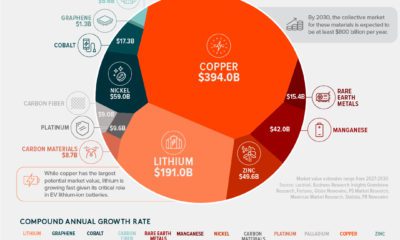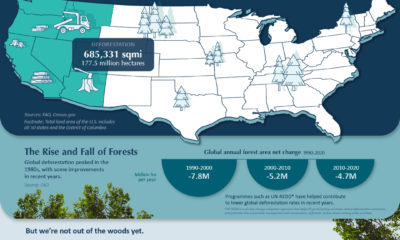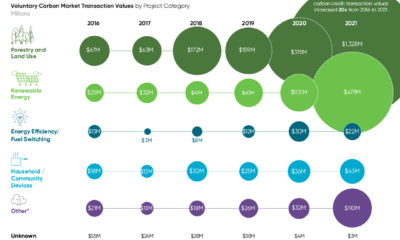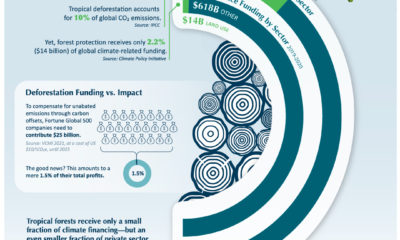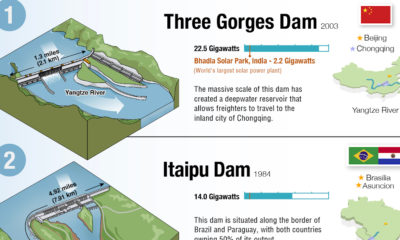As research shows, Hurricane Ida’s impact hit right at the peak of the Atlantic hurricane season. Here’s a brief explainer on the basics of hurricanes, how storms are classified, and what a typical storm season looks like in the Atlantic Basin. Let’s dive in.
Classifying a Storm
Hurricanes are intense tropical storms that are classified by their wind speed. What’s the difference between a hurricane, a typhoon, and a cyclone? They’re essentially the same thing, but are named differently based on their location:
Hurricane is used for storms that formed in the North Atlantic, central North Pacific, and eastern North Pacific (impacting countries like the U.S.) Typhoon is used for storms in the Northwest Pacific (impacting countries like Japan) Tropical Cyclone is used for storms in the South Pacific and Indian Ocean (impacting countries like Fiji and India)
Since we’re focusing on the Atlantic, we’ll be using the term hurricane and/or storm throughout the rest of this article. A storm needs to reach a certain wind speed before it gets classified as a hurricane. Storms with wind speeds of:
<73 mph are considered Tropical Storms 74-110 mph winds are considered Hurricanes 111 mph+ winds are considered Major Hurricanes
Breaking Down the Atlantic Hurricane Season
Generally, Hurricanes form in the warm ocean waters in the central Atlantic and Gulf of Mexico, following westward trade winds and curving up towards the North American mainland. Hurricanes are formed when these specific elements come into play:
A pre-existing weather disturbance such as a tropical wave Water at least 80ºF (27ºC) with a depth of at least 50 meters Thunderstorm activity Low wind shear (too much wind can remove the heat and moisture hurricanes use for fuel)
The Atlantic hurricane season technically lasts six months, beginning on June 1st and ending in late November. However, 85% of activity happens between August, September, and October. Each subregion in the Atlantic has its own unique climatology, which means peak seasons can vary from place to place—for example, south Florida sees the most hurricanes in October, while the entire Atlantic Basin’s peak season is early-to-mid September.
Climate Change and Hurricanes
According to the Center of Climate Change and Energy Solutions, it’s unclear whether climate change will increase the number of hurricanes per year. However, research indicates that warmer weather and high ocean temperatures will most likely lead to more intense storms, ultimately causing more damage and devastation. » Want to learn more about climate change? Here’s an article on The Paris Agreement: Is The World’s Climate Action Plan on Track? Source:Brian McNoldy, University of Miami Rosenstiel School of Marine and Atmospheric Science on Today’s connected cars come stocked with as many as 200 onboard sensors, tracking everything from engine temperature to seatbelt status. And all those sensors create reams of data, which will increase exponentially as the autonomous driving revolution gathers pace. With carmakers planning on uploading 50-70% of that data, this has serious implications for policymakers, manufacturers, and local network infrastructure. In this visualization from our sponsor Global X ETFs, we ask the question: will connected cars break the internet?
Data is a Plural Noun
Just how much data could it possibly be? There are lots of estimates out there, from as much as 450 TB per day for robotaxis, to as little as 0.383 TB per hour for a minimally connected car. This visualization adds up the outputs from sensors found in a typical connected car of the future, with at least some self-driving capabilities. The focus is on the kinds of sensors that an automated vehicle might use, because these are the data hogs. Sensors like the one that turns on your check-oil-light probably doesn’t produce that much data. But a 4K camera at 30 frames a second, on the other hand, produces 5.4 TB per hour. All together, you could have somewhere between 1.4 TB and 19 TB per hour. Given that U.S. drivers spend 17,600 minutes driving per year, a vehicle could produce between 380 and 5,100 TB every year. To put that upper range into perspective, the largest commercially available computer storage—the 100 TB SSD Exadrive from Nimbus—would be full in 5 hours. A standard Blu-ray disc (50 GB) would be full in under 2 seconds.
Lag is a Drag
The problem is twofold. In the first place, the internet is better at downloading than uploading. And this makes sense when you think about it. How often are you uploading a video, versus downloading or streaming one? Average global mobile download speeds were 30.78 MB/s in July 2022, against 8.55 MB/s for uploads. Fixed broadband is much higher of course, but no one is suggesting that you connect really, really long network cables to moving vehicles.
Ultimately, there isn’t enough bandwidth to go around. Consider the types of data traffic that a connected car could produce:
Vehicle-to-vehicle (V2V) Vehicle-to-grid (V2G) Vehicles-to-people (V2P) Vehicles-to-infrastructure (V2I) Vehicles-to-everything (V2E)
The network just won’t be able to handle it.
Moreover, lag needs to be relatively non-existent for roads to be safe. If a traffic camera detects that another car has run a red light and is about to t-bone you, that message needs to get to you right now, not in a few seconds.
Full to the Gunwales
The second problem is storage. Just where is all this data supposed to go? In 2021, total global data storage capacity was 8 zettabytes (ZB) and is set to double to 16 ZB by 2025.
One study predicted that connected cars could be producing up to 10 exabytes per month, a thousand-fold increase over current data volumes.
At that rate, 8 ZB will be full in 2.2 years, which seems like a long time until you consider that we still need a place to put the rest of our data too.
At the Bleeding Edge
Fortunately, not all of that data needs to be uploaded. As already noted, automakers are only interested in uploading some of that. Also, privacy legislation in some jurisdictions may not allow highly personal data, like a car’s exact location, to be shared with manufacturers.
Uploading could also move to off-peak hours to even out demand on network infrastructure. Plug in your EV at the end of the day to charge, and upload data in the evening, when network traffic is down. This would be good for maintenance logs, but less useful for the kind of real-time data discussed above.
For that, Edge Computing could hold the answer. The Automotive Edge Computing Consortium has a plan for a next generation network based on distributed computing on localized networks. Storage and computing resources stay closer to the data source—the connected car—to improve response times and reduce bandwidth loads.
Invest in the Future of Road Transport
By 2030, 95% of new vehicles sold will be connected vehicles, up from 50% today, and companies are racing to meet the challenge, creating investing opportunities.
Learn more about the Global X Autonomous & Electric Vehicles ETF (DRIV). It provides exposure to companies involved in the development of autonomous vehicles, EVs, and EV components and materials.
And be sure to read about how experiential technologies like Edge Computing are driving change in road transport in Charting Disruption. This joint report by Global X ETFs and the Wall Street Journal is also available as a downloadable PDF.
